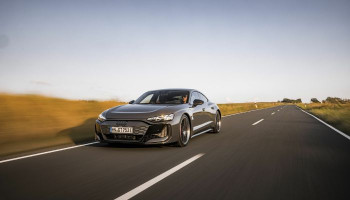
Electric cars are often seen as a modern innovation, but did you know that they have a long and rich history that dates back to the early 19th century?
In fact, the first electric car prototypes were developed before the invention of the internal combustion engine. Gad Insider explores the origins and evolution of the electric car, from its humble beginnings to its current popularity.
First record of an electric vehicle
The first record of an electric vehicle is found way back in the 1830s, but there is a debate about who invented it first. A Scottish man Robert Anderson is credited with building the first electric vehicle somewhere between 1832 and 1839.
At the same time in 1834-1835, an American named Thomas Davenport was also given the credit for the same. These early electric vehicles were crude and powered by non-rechargeable batteries, so they were more of a curiosity than a practical mode of transport.
The first practical electric car is often considered to be American inventor William Morrison’s vehicle from around 1890. It had a front-wheel drive, 4 horsepower, and a top speed of 20 mph. It could travel 50 miles on a single charge of its 24 battery cells. Morrison’s electric carriage was a sensation at the 1893 Chicago World’s Fair, where it sparked the interest of other inventors.
Competition with gasoline-powered cars
By the late 1890s, electric cars were becoming more common and competitive with gasoline-powered cars. They were quieter, cleaner, and easier to operate than their noisy and smelly counterparts.
They were also preferred by women and urban drivers, who valued their comfort and convenience. Some of the notable electric car makers of this era were Electrobat, Riker, Columbia, and Baker.
Read more: Ford Mach-E vs Tesla Model Y
However, the golden age of electric cars did not last long. By the 1920s, electric cars faced several challenges that led to their decline. The mass production of gasoline cars by Henry Ford made them cheaper and more accessible to the public. The discovery of new oil reserves and the improvement of roads and highways increased the demand for longer-range and faster vehicles.
The invention of the electric starter and the development of better engines also reduced the advantages of electric cars. By the 1930s, electric cars were almost extinct, except for some niche markets such as taxis and delivery vehicles.
Electric cars remained in the shadows for several decades, until the 1960s and 1970s, when the environmental and energy crises revived the interest in alternative fuels. Several automakers experimented with electric cars, but they were still limited by the low performance and high cost of batteries. Some of the notable examples of this period were the Henney Kilowatt, the GM EV1, and the Toyota RAV4 EV.
Modern era of electric cars
The modern era of electric cars began in the 2000s, with the advancement of battery technology and the emergence of new players in the market. The introduction of the hybrid electric Toyota Prius in 1997 and the all-electric Tesla Roadster in 2008 marked the turning points for the electric car industry.
Since then, electric cars have become more popular and diverse, with models ranging from compact hatchbacks to luxury sedans to sports cars. Some of the best-selling electric cars of today are the Tesla Model 3, the Nissan Leaf, and the BMW i3.
Electric cars have come a long way since their inception, and they are still evolving and improving. With the growing concern over the environmental and economic impacts of fossil fuels, electric cars offer a promising and sustainable solution for the future of mobility.
















